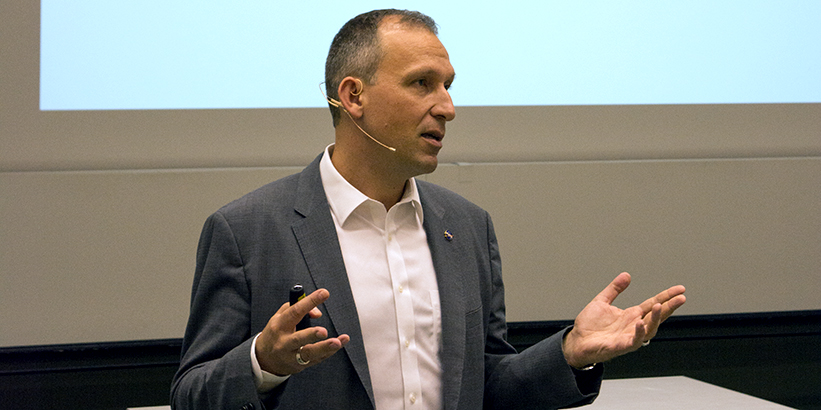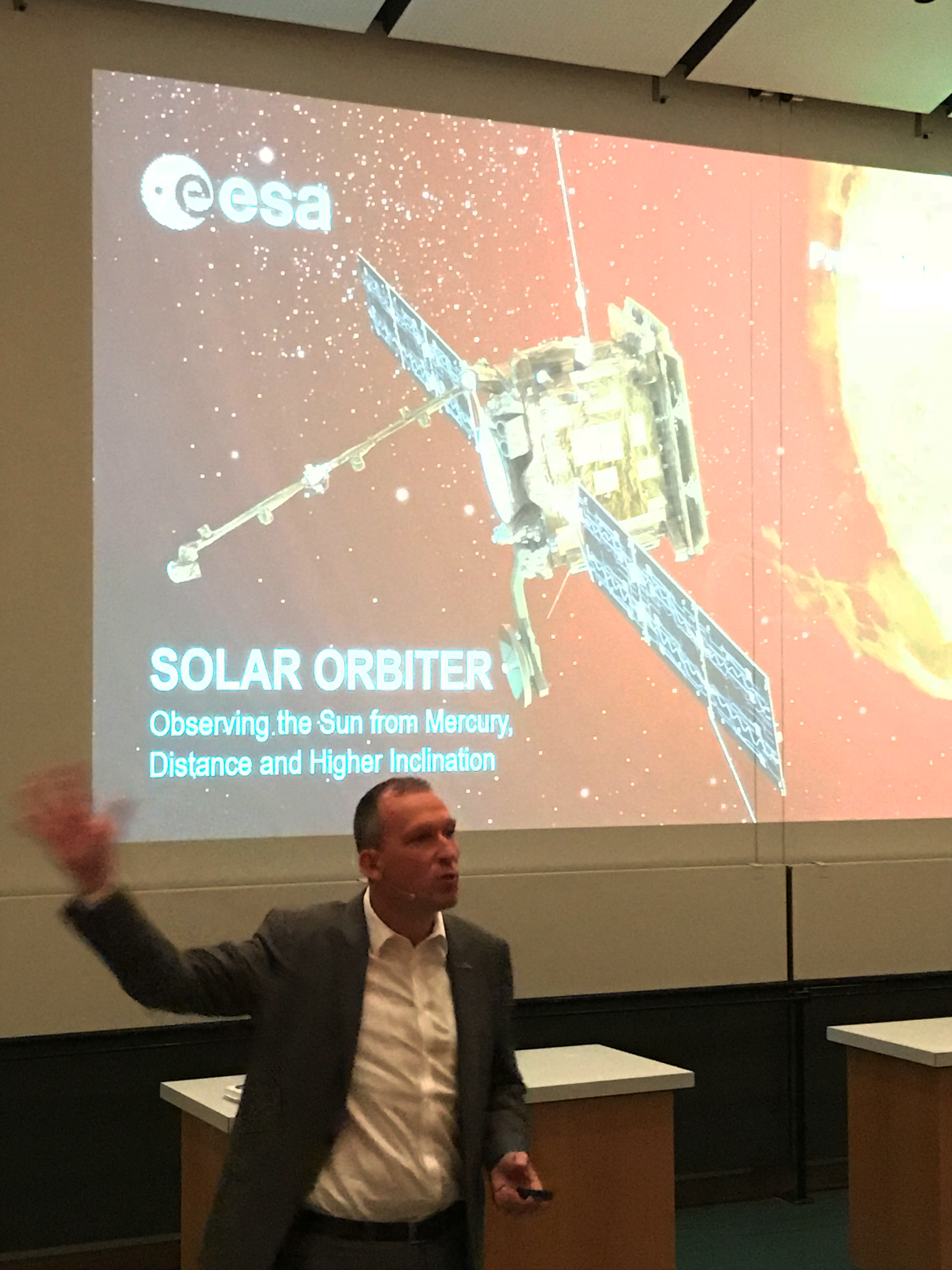“If a theory persists under pressure, then it’s good”

 When the NASA science director comes to Bern, a full lecture hall is guaranteed. This was naturally the case on Tuesday, 21 August, when Thomas Zurbuchen gave a lecture entitled “On the Shore of the Cosmic Ocean”.
When the NASA science director comes to Bern, a full lecture hall is guaranteed. This was naturally the case on Tuesday, 21 August, when Thomas Zurbuchen gave a lecture entitled “On the Shore of the Cosmic Ocean”.
The title of Zurbuchen’s talk was based on this well-known quotation by the astronomer Carl Sagan:
“The surface of the Earth is the shore of the cosmic ocean. On this shore, we’ve learned most of what we know. Recently, we’ve waded a little way out, maybe ankle-deep, and the water seems inviting.”
Thomas Zurbuchen’s presentation was a great overview of the space research activities at NASA in the recent past and present. But he also reflected on his personal connection with Switzerland. Zurbuchen didn’t just grow up here. He studied at the University of Bern, and he has also personally conducted various tests for well-known space missions. For certain instruments of the solar probe SOHO, for example, he carried out calibrations in the laboratories at the University of Bern. “Bern has by far the best laboratories for calibrations,” praised Zurbuchen.
 Today he no longer calibrates instruments. As NASA’s science director, he oversees an armada of space probes. A few days ago, for example, he was in Florida for the launch of the Parker Solar Probe. “The newly launched Parker Solar Probe, in conjunction with the upcoming Solar Orbiter mission gives us a perfect example of how far we can go when we work together across traditional boundaries and realize that nothing in science is done in isolation.“ Understanding our own star leads to an increased awareness and appreciation of the Earth’s place in our solar system, as well as the Sun’s influence on planets near and far, all the way out to the boundary of our solar system.
Today he no longer calibrates instruments. As NASA’s science director, he oversees an armada of space probes. A few days ago, for example, he was in Florida for the launch of the Parker Solar Probe. “The newly launched Parker Solar Probe, in conjunction with the upcoming Solar Orbiter mission gives us a perfect example of how far we can go when we work together across traditional boundaries and realize that nothing in science is done in isolation.“ Understanding our own star leads to an increased awareness and appreciation of the Earth’s place in our solar system, as well as the Sun’s influence on planets near and far, all the way out to the boundary of our solar system.
The Parker Solar Probe is the first spacecraft named after a living person, explained Thomas Zurbuchen. “Eugene Parker, now 91, developed the theory of solar wind in the mid-1950s. He had to take a lot of criticism for it at the time. Later, however, his theory proved correct.” His example shows that researchers sometimes have to withstand great pressure with new theories. “If a theory persists under pressure, then it is a good theory,” says Zurbuchen.
 A similar example is the discovery of the first exoplanet by Swiss researchers Michel Mayor and Didier Queloz. “When they presented their results to the public, there was a lot of criticism at first.” Many researchers had argued that such a planet could not even exist. “Today we know that there are many different planets and more are being discovered.” With this example, Zurbuchen pointed at NASA’s TESS space probe, which recently delivered its first test images. And with unmistakable pride, he added: “I can tell you that TESS has already found some new planets.”
A similar example is the discovery of the first exoplanet by Swiss researchers Michel Mayor and Didier Queloz. “When they presented their results to the public, there was a lot of criticism at first.” Many researchers had argued that such a planet could not even exist. “Today we know that there are many different planets and more are being discovered.” With this example, Zurbuchen pointed at NASA’s TESS space probe, which recently delivered its first test images. And with unmistakable pride, he added: “I can tell you that TESS has already found some new planets.”

